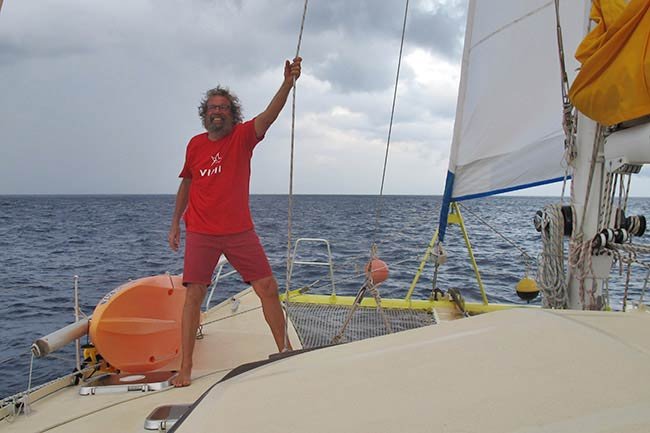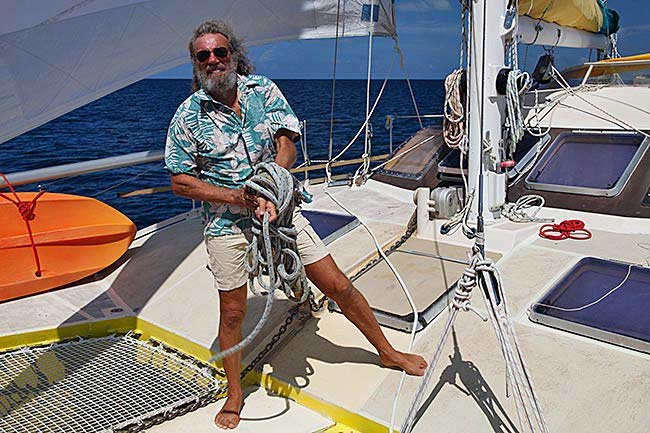February 2013
Hello everyone,
January 2013: for us, a month of beautiful crossings... albeit unexpected. Let me explain: This is the story of a boy and a girl, "el Niño" and "La Nina", a weather phenomenon associated with the temperature of the waters of the eastern Pacific: some years the niño dominates, and Polynesia is visited by tropical depressions or even worse: many boats will spend these months in the Marquesas, which ignore cyclones, or in the Gambier, where they are very rare. When it is the niña that dominates, on the contrary, Polynesia has no fear of dangerous phenomena: for example, two years ago we spent the entire season here without any concerns. This year, the forecasts predict an intermediate situation between niño and niña so we had planned to spend a few months in Gambier (which we love), but I was in full press promotion, singing at the Olympia and doing a tour of lectures for Connaissance du Monde in November and December (the right time to bring the boat fro Tahiti to the Gambier) my friend Bernard, who occasionally sails Banana Split, waited for a period of westerly winds, the set sail for the Gambiers. After two days, the autopilot crashed, Bernard returned with great difficulty, against the wind, and that is why, instead of finding Banana Split at anchor in Mangareva, we re-embarked at Taina marina, in Tahiti , with a big program change : we would spend these months in the eastern Tuamotus, also rarely threatened.
So, in January, we made four beautiful crossings (Francette does not like to be shaken, nor does she enjoy crossings longer than two days, so I had to chose the right weather, which is quite easy thanks to the incredible progress afford by "grib" files. Each time well "covered" by a favorable forecast, we reached successively:
-Rangiroa, where Yann Hubert, a former member of the "Manta Ray Club," with whom I had dived during the shooting of my first film about Polynesia in 1993, came on board to show me the incredible pictures of fish that make up his future book, "Gueules de récif", he asked me to preface ... a great honor for me.
-Fakarava, for news of the papaya trees we had planted in the garden of our friend Jacques ... These ones are fine, thank you ; we also worked to prepare for the ecological journey that will be the first prize of a competition on the theme "Do not harm the sea", that we will soon organize with the website Futura-Sciences.
In the place we refer to as "anchorage number one" , unfortunately, the papaya trees we had planted are dead: the island was deserted, nobody was there when a three months long drought prevailed.
Makemo is ideal for supplying; plus, we had to change the HD projector that we use to work on our films and to watch from time to time a great movie on board, at the end of the world: we gave the old one to a local association that will use it to organize shows for the benefit of a local association.
And then, at the moment I speak, we have just reached Amanu, one of the easternmost atolls, where we'll spend a good part of the season; it is perfectly sheltered, but we had to wait for a favorable time to enter the pass, from which emerged a strong current, called opape in Tahitian ; these passages are always fascinating to cross : only these passes allow access to the nirvana of well sheltered lagoons : it was one of them that the great French sailor Bernard Moitessier mentioned when he said: "Paradise is at this price."
I send you a little heat from Polynesia, the fragrance of tafano flowers, the sound of a ukulele in the evening on the shore, and the curiosity of the fish that come to take a look at that big yellow thing that floats for a few weeks on the waters of their lagoon.
And I wish you a fairytale February.
Antoine
Previous letter | Next letter




